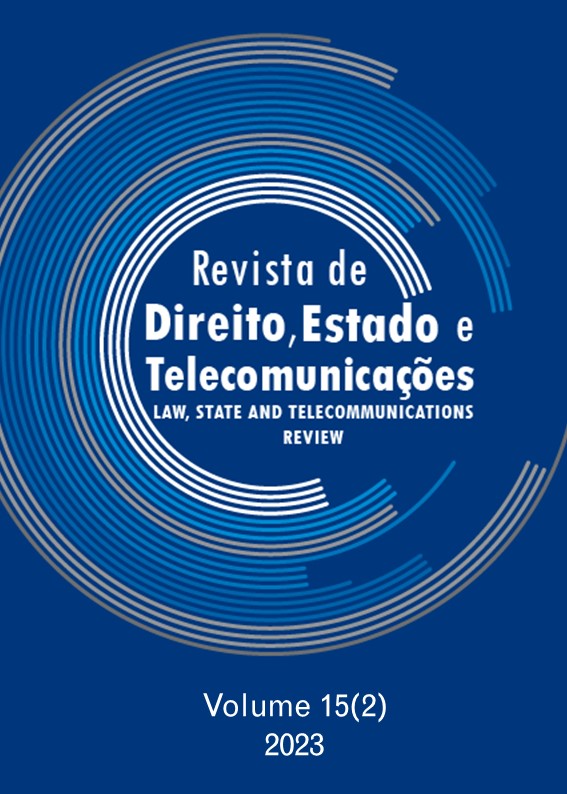Image-Based Digital Face Identification Technologies
Criminal Law Aspect
DOI:
https://doi.org/10.26512/lstr.v15i2.44744Keywords:
Digital Identification. Biometric Technologies. Portrait Expertise. Privacy. Face Identification.Abstract
[Purpose] The purpose of this article is to analyze the theoretical and practical aspects of digital face identification technology in Ukraine and suggest the necessary corrections to the optimal legal regime for the use of such technology in criminal proceedings.
[Methodology/Approach/Design] The leading research method is the inductive method of the legal analysis that involves the problem formulation, analysis of the legal provisions regulating this question, practical study of the law enforcement, and formulation of conclusions.
[Findings] In this article, the authors present a complex analysis of the Ukrainian legislation, define the particularity of criminal responsibility for the violation of privacy under the Ukrainian law in the context of the use of digital face identification technology, and suggest a list of reasonable amendments to the legislation to improve the level of such protection.
[Practical Implications] The materials of this article have practical value for investigating crimes and protecting individuals against illegal use of their images by using digital face identification technology in the context of Ukrainian law.
[Originality/Value] The topicality of the study is due to the fact that over the past decade face recognition has become one of the most powerful biometric technologies capable of identifying and verifying people involved in crimes based on digital images or video frames, but the legal regime of said identification had not yet been sufficiently explored in Ukraine.
Downloads
References
Bah, S.M., & Ming, F. (2020). An improved face recognition algorithm and its application in attendance management system. Array, 5. DOI: 10.1016/j.array.2019.100014
Civil Code of Ukraine. (2003). Retrieved from https://zakon.rada.gov.ua/laws/show/435-15
Criminal Code. (2011). Retrieved from https://zakon.rada.gov.ua/laws/show/2341-14#Text
Criminal Procedure Code. (2013). Retrieved from https://zakon.rada.gov.ua/laws/show/4651-17#Text
Detsing, J., & Ketcham, M. (2017). Detection and facial recognition for investigation. In 2017 International Conference on Digital Arts, Media and Technology (ICDAMT) (Chiang Mai, 1-4 March 2017) (pp. 407-411). Chiang Mai: IEEE. DOI: 10.1109/ICDAMT.2017.7905002
Introna, L., & Nissenbaum, H. (2020). Facial recognition technology a survey of policy and implementation issues. New York: Center for Catastrophe Preparedness & Response, 60 p.
Law of Ukraine "On Information". (1992). Retrieved from https://zakon.rada.gov.ua/laws/show/2657-12#Text.
Law of Ukraine "On Personal Data Protection". (2010). Retrieved from https://zakon.rada.gov.ua/laws/show/2297-17#Text
Merchlinsky, C. (2019). How facial recognition became a routine policing tool in America. Retrieved from https://www.nbcnews.com/news/us-news/how-facial-recognition-became-routine-policing-tool-america-n1004251
Nolasco, C., Vaughn, M.S., & del Carmen, R.V. (2010). Toward a new methodology for legal research in criminal justice. Journal of Criminal Justice Education, 21(1), 1–23. DOI:10.1080/10511250903518944
Poirson, C. (2021). The legal regulation of facial recognition. In: The Fourth Industrial Revolution and Its Impact on Ethics. Sustainable Finance (pp. 283-302). Cham: Springer.
Ramya, N., Manasa, D., Ramya Sri, N., & Naveed, Sk. (2020). Testing of modules for facial recognition. EPRA International Journal of Research and Development (IJRD), 5(11), 132-136. DOI: 10.36713/epra5586.
Roussi, A. (2020). Resisting the rise of facial recognition. Nature, 587, 350-353.
Semchuk, N., Lykhova, S., & Demianenko, U. (2019). Using English as a foreign language when teaching subject of the criminal law cycle. The Asian International Journal of Life Science. Supplement, 21(2), 517–534.
Sunstein, C. (1993). On analogical reasoning. Harvard Law Review, 106, 741–791. DOI: 10.2307/1341662
Thakur, A., Prakash, A., Mishra, A.K., Goldar, A., & Sonkar, A. (2020). Facial recognition with Open Cv. In Computational Vision and Bio-Inspired Computing. Advances in Intelligent Systems and Computing, vol. 1108 (pp. 213-218). Cham: Springer. https://doi.org/10.1007/978-3-030-37218-7_24
Tyler, T.R. (2017). Methodology in legal research. Utrecht Law Review, 13(3), 130–141. DOI: 10.18352/ ulr.410.
Shramovich, V. (2021). She or she is not: a veteran of the Right Sector is suspected of escorting Ukrainian prisoners in Donetsk. Retrieved from https://www.bbc.com/ukrainian/news-55752337
Downloads
Published
How to Cite
Issue
Section
License
Copyright (c) 2023 Law, State and Telecommunications Review

This work is licensed under a Creative Commons Attribution 4.0 International License.
By submitting this paper to the Law, State and Telecommunications Review,
I hereby declare that I agree to the terms of the Creative Commons Attribution 4.0 International (CC BY 4.0).


